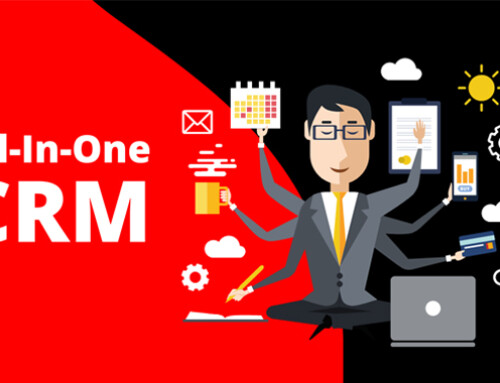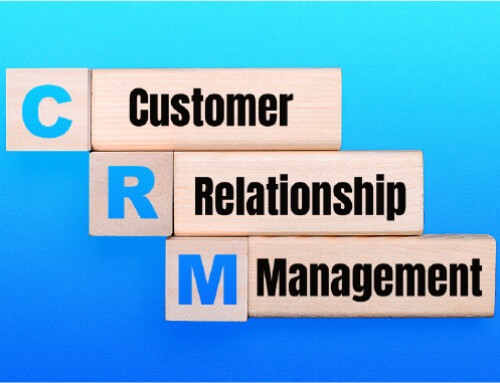Contents
Finding new leads is great news. But not all leads turn into paying customers. Your marketing team needs to know which leads they should prioritize and reach out to first. Finding potential buyers among your leads can help you focus on valuable leads. When you learn about the benefits of lead scoring, you will understand why you need to start using it ASAP.
Thinking otherwise? Let me describe a situation. Someone contacts you through email and asks for more details about your product or service. This is where you get all excited thinking about the sweet sale you will make. You will email them the information they asked for and wait for a reply. They will write back and ask for contact information. So, naturally, you send them your phone number. They will then call you and ask more questions. You will gladly provide them with answers. Then they will ask to meet with you, and you schedule a meeting. You guys will meet, they ask for more details, and you patiently give them more and more information. Now, this is where it gets interesting. They will tell you they are still not sure if your product or service is suitable for them.
There you go; you just wasted days and days of valuable time on a lead that would not turn into a customer. You can bang your head on the desk now.
This is just one example of so-called “interested leads” that, for a million reasons, will not do business with you, despite being interested. You need to implement lead scoring in your sales strategy to prevent wasting time and recourse on unqualified leads. Wondering what lead scoring is? This blog post will help you learn all about the benefits of lead scoring.
What is Lead Scoring?
The lead scoring methodology is used by business owners, sales reps, and marketing strategists to identify which leads are more valuable to a business. Sales lead scoring methods use a numeric system to assign point values to leads. You can score leads based on how close they are in demographics to your buyer persona and actions they take through the sales process, such as website visits, email clicks, and free content downloads.
In the lead scoring methodology, you define a maximum value point for leads to reach. Based on the number of points they earn in their buyer journey, you will be able to predict which leads are more likely to buy a product or sign up for a service. Leads that reach your max value point are hot leads for your business. Knowing when to reach out to a lead helps your marketing and sales team approach prospects productively while being more focused and informed.
For example, someone following you and engaging with your business on social media has a higher chance of becoming a buying customer than someone who has recently visited your website twice. If you rank your leads from 1 to 5 (5 being your maximum value point), the first lead ranks around 3 or 4 while the second lead’s score is 1. Reaching out to the first lead has a high chance of them converting to a customer. The second lead, however, might stay in your sales funnel with a lead score of 1, or start engaging with your business until they rank up and max out your value point. Then, you can reach out to them and possibly convert them.
Why Is Lead Scoring Important?
So far, we know that lead scoring can help sales reps identify and prioritize valuable leads. But lead scoring is not just a marketing strategy. The benefits of lead scoring do not end here. There are 4 main benefits of lead scoring that will help you understand why all successful businesses use a lead scoring methodology.
-
Increased sales efficiency
One of the benefits of lead scoring is providing insights into when a customer is ready to make a purchase. This information helps your sales reps develop a strategy to contact leads at the right time. Let me give you a familiar example. You walk into a store and browse through racks and shelves. One salesperson follows you around the store from the second you walk in. Every time you stop to look at a product, they bombard you with product information and details. Sure, they are doing a good thing by providing you with further information. But is that information even necessary? How often have you just given up and left a store empty-handed because you were annoyed and frustrated? Have you ever noticed how desperate salespeople with this strategy seem?
If the salesperson in that store has a lead scoring strategy, they will watch you closely without interrupting your sales process. They will also stay close to answer your questions while giving you enough space to roam around the store. When you are ready to buy something, they will approach you and give you more information. And then, you will happily purchase from the store and appreciate the salesperson’s attitude.
That’s why increased sales efficiency is one of the benefits of lead scoring. You will not waste time constantly contacting leads, you will not lose leads that are potential customers, and you will be able to convert true prospects when they are ready.
-
Increased marketing effectiveness
Another critical advantage of lead scoring is creating effective marketing strategies. With lead scoring, you will have a better overview of which marketing strategies produce true leads and which marketing channels drive more leads. Overall, it allows you to effectively measure your marketing ROI. This will increase your marketing effectiveness because you will know where to reinvest your marketing budget.
Although, this is not the only way sales lead scoring benefits marketing effectiveness. By knowing where your leads are on their buyer’s journey, you will be able to create more relevant and targeted content for them. Providing content that leads need while moving through different stages of your sales funnel is an effective way to build trust. When you build trust with your leads, you will have loyal customers and advocates.
-
Improved sales and marketing alignment
In a successful business, marketing and sales teams work in sync and produce important results such as increased sales and ROI. One of the benefits of lead scoring here is that it will help marketing strategists and sales reps work together to find and nurture sales-ready leads. Knowing which leads will convert is the key information both departments need. After recognizing true prospects through a lead scoring methodology, the marketing team can create targeted content and hand them over to the sales reps when they are ready to convert.
Lead scoring can drastically improve the communication between marketing and sales teams. When sales reps create reports about whether a good amount of sales-ready leads are being passed on or if those leads are, in fact, sales-ready, the marketing team can adjust and improve their strategies and sales lead scoring methods.
Every lead that enters your sales funnel has an associated cost. By identifying true leads, you will save money and stop wasting time on unqualified leads. Lead scoring will also prevent hot leads from being lost by telling you when to approach your leads. You will be able to create targeted content and improve customer experience. When used currently, the lead scoring methodology can increase a company’s revenue by:
- Identifying which marketing strategies and channels are producing hot leads.
- Organizing and communicating with leads based on their sales-readiness level.
- Improving time management for your sales and marketing teams.
Of course, in talking about the benefits of lead scoring and its best practices, you have to keep in mind that the lead scoring methodology isn’t something you can do manually and case by case. Unless you have less than a dozen leads per month, manual lead scoring is impractical, to say the least. That’s why further down, I’ll discuss how the right lead tracking software is indispensable to your business, specially if you’re an entrepreneur, just starting up your business, or planning to grow. In fact, RunSensible is a real all-in-one marketing and sales tool designed for startups, entrepreneurs, and very small businesses trying to grow.
You capture various different types of data from your leads and potential customers. Based on these data, there are different types of lead scoring methodology you can implement. Here are the most effective lead scoring models to use: This is one of the most common lead scoring methods. Basically, it will allow you to identify hot leads from those visiting your website. To do so, you need to recognize a lot of lead behavior when visiting your website. You want to focus on the parts of your website a hot lead would visit. For example, a customer adds products to their shopping cart and pays for them. A qualified lead, however, might add products to their cart and leave them there. They might also submit their email for promotions. Here is a good example of scoring leads that visit your website: This lead scoring methodology is great for e-commerce and online businesses. Use the website visitor scoring method if you have a product or service to sell online and use online marketing to generate leads. What matters most in business-to-business sales is the person you are talking to. A company might be fit to be your customer, but if you talk to the wrong person, you might lose the deal. When a lead from a company approaches you, their job title is what indicates their lead qualification. You can assign different scores to different job titles. For example, if a lead is a vice president, the chances of them converting and purchasing a product or service are higher than an HR manager because the VP has the authority to make a purchase. Another example: Let’s say you sell cybersecurity tools. In this scenario, the IT department will be valuable leads. You can also rate B2B leads based on company size and the number of employees if you sell products or services at an enterprise level. Here is an example of B2B lead scoring for a business that sells IT services: As I already mentioned, B2B lead scoring is excellent for businesses that target other businesses. B2B lead scoring focuses on job titles and business types. You cannot really use this method if you sell products and services directly to consumers. The email engagement scoring system is great for businesses that use email marketing as their main marketing strategy. Emails are a great way to score leads because it’s pretty easy to see who is responding to your email campaigns. You can use an email marketing tool like RunSensible to check the number of open rates, click-throughs, and people who have not responded to most of your emails. Email engagement lead scoring allows you to identify hot leads and gives you an overview of how you can tailor future email marketing campaigns to generate more true prospects. Here is an example of lead scoring through email engagement: This method works best for businesses that use email marketing campaigns as their main marketing strategy. But, even if you don’t rely heavily on email campaigns to generate leads, you can still use the benefits of lead scoring to gain insights on conversion through email campaigns. Negative lead scoring is the opposite of every other method I introduced. It’s the process of identifying unqualified leads. This method helps you weed out your prospects and find the leads that approached you but are, for any reason, not interested. People open your emails and visit your website for different purposes. Maybe they were searching on Google to learn about a topic and came across your blog. That’s why not everyone who visits your website or social media can become a customer. Negative sales lead scoring helps identify those leads so your marketing team and sales reps would know not to approach them for sales reasons. Here is how you can identify non-prospects with lead scoring: This lead scoring methodology can be used by any business in any industry, if lead scoring best practices are observed, of course. You can benefit from negative lead scoring to know which leads not to pursue. You can even score minus thousands if the person is from a competitor company. This way, you can keep an eye on their activity on your website but force them out of your sales funnel. One important factor you need to consider before implementing a lead scoring method is knowing your sales funnel. Sure, the benefits of lead scoring can elevate your sales. But, if you have a short sales funnel and can easily sell your products, lead scoring cannot really be useful. Another factor to consider is the number of leads approaching you. You need to know if you have enough leads to rank. If your lead number is low, it’s best to spend more time on lead generation. If your sales reps are busy generating and converting leads, then you don’t really need to use lead scoring. But, if your sales reps are unhappy with the quality of leads and low conversion rates, then invest in a lead scoring method best suited for your sales process. When defining lead scoring models, each business has its own approach based on its experiences and sales funnels. The best way to come up with your own lead scoring method is to use the information from your previous leads, how they behaved in each stage of your sales funnel, to create your own value system. Here are the most vital lead scoring best practices to help you reach a higher sales revenue with increased qualified leads: As I have mentioned before, a benefit of lead scoring is increased sales and marketing alignment. But for lead scoring to tighten up the relationship between your marketing and sales teams, they must work together seamlessly. Sales reps can identify trends through conversations with prospects. They can learn who these people are, what their pain points are, and what problems they are trying to solve. Having this information puts the sales team ahead of the marketing team in generating leads. An alignment between sales and marketing means the sales team would pass on these trends to the marketing team. Then, the marketing team would be able to create content and strategies that would positively affect leads in the sales funnel. These contents and strategies would be based on what leads are interested in, so the marketing team can create a scoring system based on their targeted content. Your very first step toward selling something is to know who your target audience is. You need to create a fictional ideal customer, a buyer persona, to know what type of person you should target. But how does defining buyer persona help with lead scoring? Sales and marketing teams assign scores to the target audience and the prospects that engage with campaigns or content specially curated for them. This means that these prospects are hot leads for the sales team. Assigning scores based on demographics helps identify MQLs or marketing qualified leads. Where do marketing and sales find these demographics? The buyer persona. These are some of the demographics used to score a B2B lead: Lead scoring targets sales-ready leads or MQLs. When a lead is ready to convert, they have reached your maximum value point. Your maximum value point can be any number. The best scale you can use is 0 to 100. You can give different scores to different activities based on the importance of those actions. Once a lead reaches 100 points, your sales teams will know that your lead is ready to make a purchase. Let’s look at an example. There are two leads in this scenario. Lead A has filled out a form on a landing page (15 points), opened your last 3 emails (5 points), and matches your company’s buyer persona demographics (30 points). Lead A has reached 50 points and still needs nurturing to reach your maximum value point of 100. Lead B has registered for a webinar (15 points), attended the webinar (5 points), visited the website homepage (5 points), and clicked on a blog post (5 points). Lead B received 30 points but let’s add a plot twist. Lead B requested a demo after these engagements and received an additional 100 points because requesting a demo is an immediate MQL action. Now at 130 points, Lead B exceeded your maximum value point, and your sales team can approach them while your marketing team focuses on nurturing lead A. Now that you have a buyer persona and determined a maximum value point, you need to assign points to different actions. The example from the last section shows how you can score each action. Below are actions you can assign positive scores to: Assigning positive scores helps you manage your lead’s progress towards conversion. But, negative actions matter as well. As I mentioned previously, negative scores help prioritize leads and assign qualifications. Below are some actions you can score negatively: Another set of points you can assign is point decay. Basically, leads that decrease engagement with your business can fall into the unqualified category. This means less time spent on them and more on active leads. Use the rules below to define point decay: A marketing automation system can help your marketing team track and score a lead’s behavior, while CRM tools can help your sales reps attend to potential customers. When you combine these two tools, your team members can access all the data they need from one dashboard. They can view lead status and activity records and understand lead actions in marketing campaigns they are engaged with. When a lead is sales-ready and converts to an MQL, you can automate alerts and assign the lead to a sales rep. Marketing automation and CRM tools are available on RunSensible. For example, you can use the tool to define an automation workflow commanding that when a lead reaches the maximum status on your sales funnel, send a promotional email to the lead. Now that you have a good understanding of lead scoring methods, why you need them, and how to use them, don’t hesitate to integrate one into your sales funnel. Lead scoring methods alongside the right lead tracking and marketing automation tool can elevate your business in ways you wouldn’t think of. You will have so much more time on your hands to spend on your actual business or creating the quality content that will draw in more new leads. With RunSensible, you’ll be able to separate hot leads from unqualified leads and place them in different segments with different workflows. That means you’ll have a more effective approach to sales-ready leads and their conversion. Sign up for free right now, watch our intro video, or book a demo to learn more about how RunSensible can make running your business simpler and more profitable. Any business can benefit from sales lead scoring. You just have to make sure you have enough leads to rank. They are different in terms of demographics to score leads with. Use RunSensible to define a sales funnel. Then you can update leads in your sales pipeline by the actions they make. These actions can be ranked, and your leads will earn points in their buying journey. Then you can use the automation tool to alert your sales reps when a lead reaches the maximum value point and send them emails and set appointments/meetings. 4 Best Lead Scoring Methodologies
Website visitor scoring
B2B lead scoring
Business size:
Department:
Title:
Email engagement
Negative lead scoring
What to Consider Before Implementing Scoring Models
Lead Scoring Best Practices
Align sales and marketing
Define buyer persona and customer profile
Define a lead scoring value system
Assign positive and negative scores
Integrate marketing automation and CRM tools
Bottom Line: Invest in a Lead Scoring Model Now
FAQ
Can I use lead scoring for my startup?
Is B2B lead scoring different from B2C lead scoring?
How can RunSensible help me with lead scoring?
Disclaimer: The content provided on this blog is for informational purposes only and does not constitute legal, financial, or professional advice.






